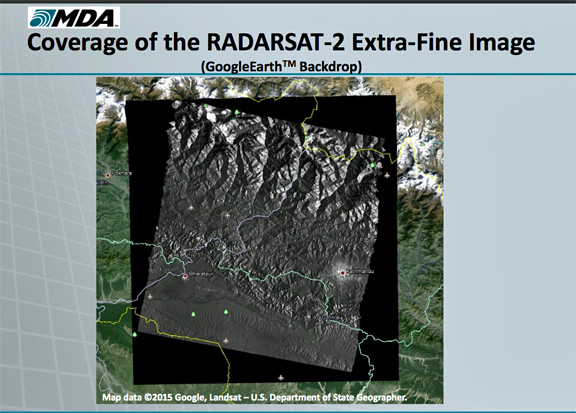[SatNews] MDA’s Information Systems group announced their release of RADARSAT-2 information products and analysis from the major earthquake in Nepal.
The unique Extra-Fine imaging mode offered by RADARSAT-2 provides an unprecedented ability to capture exceptional resolution imagery over large areas (nominal 5 m resolution at a nominal swath width of 125 km), and from that identify detailed changes.
The information products developed by MDA focus on Nepal’s capital Kathmandu and the surrounding region. The information includes both change detection products that can be used to identify damage across the monitored area, as well as using Interferometric Synthetic Aperture Radar techniques to measure the movement of ground features to millimetre-level accuracy. RADARSAT-2 with its Extra-Fine imaging mode has unique characteristics that can be used to map the impacted region by measuring the displacement and has sufficient resolution to map fault zones, infrastructure damage and impact from landslides.
The RADARSAT-2 information is available to download from http://gs.mdacorporation.com/nepal/.
RADARSAT-2 is capable of collecting images through all weather conditions, 24 hours a day. It is able to repeatedly image the same location on Earth over time, from the same orbital position, and generate data that is processed. When a natural disaster of the magnitude experienced in Nepal occurs, there is an urgent need to identify major changes that have an impact on the people and infrastructure on the ground. Satellite imagery acquired immediately after the event provides updated views of how the landscape has changed and the extent of damage to critical infrastructure such as buildings, roads, and airports. These images can be compared with satellite imagery taken before the event to help identify areas that have been hit hardest by the disaster, determine passable routes for aid workers, as well as safe areas suitable for establishing aid camps to provide medical support and shelter.


